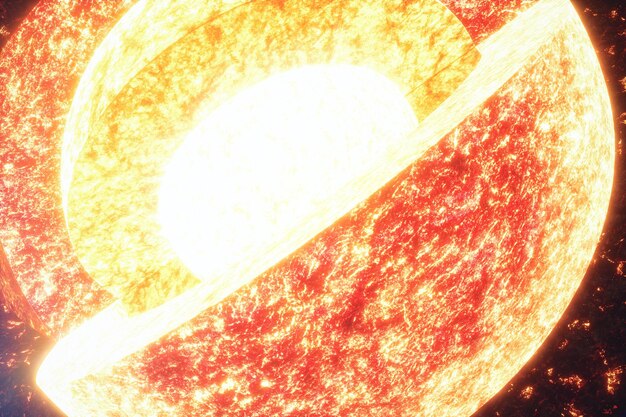The Blazing Heart of the Earth: Unveiling the Mysteries of Coelocaliente

Beneath the surface of our dynamic planet lies a phenomenon as captivating as it is powerful: Coelocaliente. This term, evocative of intense subterranean heat (from Spanish roots meaning “hot sky” or “blazing cavity”), represents more than just geological jargon; it signifies a complex and potent manifestation of Earth’s internal energy. Often associated with regions of exceptional geothermal activity, volcanic systems, or hyper-energized hydrothermal fields, Coelocaliente describes zones where the plaanet’s fiery core makes its presence dramatically known. These areas are not merely scientific curiosities; they are crucibles of unique ecosystems, potential powerhouses for renewable energy, and windows into the very forces that shape continents and drive life in extreme environments. Understanding Coelocaliente is crucial for harnessing sustainable energy, appreciating biodiversity in the harshest conditions, and mitigating geological hazards. This article delves deep into the blazing heart of Coelocaliente, exploring its origins, characteristics, significance, and the challenges it presents.
What Defines Coelocaliente? Unpacking the Core Concept
The essence of Coelocaliente lies in its extraordinary concentration and expression of geothermal energy within a localized subterranean or submarine environment. Unlike diffuse geothermal gradients experienced widely across tectonic plate boundaries, Coelocaliente implies an intense, focused, and often volatile hotspot. Key defining characteristics include exceptionally high temperatures significantly exceeding regional averages, profound hydrothermal circulation where superheated water and steam act as primary energy and mineral transport agents, and frequently, a direct connection to magmatic sources or deep crustal fractures channeling primordial heat. These zones are typified by dramatic surface expressions: roaring fumaroles blasting steam and gases, vividly colored hot springs depositing intricate mineral terraces, violently bubbling mud pots, or even shallow magma chambers near the surface. The intensity of the geothermal activity within a Coelocaliente zone creates a distinct micro-environment, both geologically and biologically, setting it apart from more subdued thermal areas. It represents a point where the Earth’s internal furnace burns unusually close to the surface, creating a landscape sculpted by fire and water in equal measure.
The Geological Engine: Tectonic Origins of Coelocaliente Zones
The birth of a Coelocaliente zone is fundamentally tied to the restless movements of Earth’s tectonic plates, acting as the primary geological engine. These intense geothermal hotspots most commonly arise in regions where the planet’s crust is being stretched, compressed, or torn apart, creating pathways for heat to ascend. Subduction zones, where one tectonic plate plunges beneath another, generate immense friction and partial melting in the mantle, fueling volcanic arcs that often host Coelocaliente systems within their calderas or flanks. Continental rift zones, where plates are diverging and the crust is thinning, allow mantle-derived magma to rise closer to the surface, creating extensional faults that become conduits for superheated fluids. Additionally, intraplate hotspots, fueled by deep-seated mantle plumes unrelated to plate boundaries (like Yellowstone), can generate massive Coelocaliente provinces. The specific tectonic setting dictates the depth of the heat source, the chemistry of the circulating fluids, and the resulting surface manifestations. Understanding this deep-seated tectonic origin is paramount for predicting the behavior, longevity, and energy potential of these zones, as it reveals the immense forces concentrating heat beneath a relatively small area of the Earth’s surface.
Manifestations on the Surface: Recognizing Coelocaliente Activity
The power lurking within a Coelocaliente system forcefully announces itself through diverse and often spectacular surface manifestations. The most iconic are hydrothermal features: geysers erupting in towering columns of boiling water and steam at regular intervals, testament to complex underground plumbing and pressure dynamics; vibrant hot springs ranging from clear, azure pools to milky, mineral-rich baths, their colors dictated by dissolved minerals and heat-loving microbes; hissing fumaroles venting superheated gases like steam, carbon dioxide, and hydrogen sulfide directly into the atmosphere; and churning mud pots where acidic waters decompose surrounding rock into viscous, bubbling clay. Ground temperatures in these areas are markedly elevated, sometimes making the soil itself feel warm or even hot to the touch. Vegetation patterns often provide subtle clues, with heat-tolerant or specialized species thriving near vents, while other areas might be barren due to scorching temperatures or toxic gases. Geochemical signatures, such as high concentrations of silica, sulfur, lithium, or other elements dissolved from deep rocks by the aggressive fluids, are another key indicator. Recognizing these diverse surface manifestations is essential for identifying and mapping Coelocaliente zones, whether for scientific study, energy exploration, or hazard assessment, as they paint a vivid picture of the intense processes occurring just below our feet.
Extremophiles: Thriving Life in the Coelocaliente Crucible
Defying the notion that intense heat and chemical extremes preclude life, Coelocaliente zones are often teeming with specialized organisms known as extremophiles, forming unique and resilient ecosystems. These environments, characterized by scalding temperatures, fluctuating pH levels (often highly acidic or alkaline), high salinity, and the presence of potentially toxic chemicals like sulfur or heavy metals, become oases for microbes specifically adapted to such harshness. Thermophilic (heat-loving) archaea and bacteria form the foundation of these food chains, utilizing chemical energy from volcanic gases (like hydrogen sulfide or methane) through chemosynthesis, rather than sunlight, to produce organic matter. These primary producers support a cascade of other extremophiles: heat-tolerant algae, specialized protozoa, and even complex invertebrates like certain species of worms and crustaceans adapted to life near hydrothermal vents. The study of these extremophile communities within Coelocaliente environments is revolutionary. It expands our understanding of the limits of life on Earth, provides insights into potential life on other planets with similar extreme conditions (like subsurface Mars or the ocean moons of Jupiter and Saturn), and yields enzymes and biomolecules (“extremozymes”) with extraordinary stability and function, driving innovations in biotechnology, medicine (e.g., PCR for DNA amplification relies on a thermophilic enzyme), and industrial processes. Coelocaliente, therefore, is not just a geological wonder, but a vibrant biological frontier.
Harnessing the Inferno: Geothermal Energy from Coelocaliente
The intense heat concentrated within Coelocaliente zones represents one of the planet’s most potent and sustainable renewable energy resources. Geothermal energy harnessed from these high-temperature reservoirs offers a continuous, baseload power source, independent of weather conditions like sun or wind, making it a critical component of a clean energy future. Technologies vary depending on the specific characteristics of the reservoir. Conventional hydrothermal power plants tap directly into naturally occurring underground reservoirs of steam or very hot water (above 150°C, common in Coelocaliente) to drive turbines and generate electricity. Enhanced Geothermal Systems (EGS), or “hot dry rock” technology, aim to exploit the heat from deep, hot rocks where natural permeability or fluid is insufficient; this involves creating engineered reservoirs by injecting water into fractured rock formations, a technique particularly promising for extending geothermal potential beyond naturally occurring Coelocaliente vents. Direct-use applications are also significant, utilizing lower-temperature fluids (but still abundant in Coelocaliente regions) for district heating, greenhouse warming, aquaculture, and industrial processes. The energy potential of Coelocaliente zones is immense, offering the possibility of generating gigawatts of clean electricity with a very small land footprint and significantly lower lifecycle greenhouse gas emissions compared to fossil fuels. However, responsible development requires careful management to ensure reservoir sustainability and minimize induced seismicity or environmental impacts like gas emissions or groundwater contamination.
Balancing Power and Peril: Hazards Associated with Coelocaliente
While Coelocaliente zones offer immense benefits, their inherent volatility also presents significant geological hazards that demand respect and careful management. The intense heat and pressurized fluids underground create a landscape prone to sudden and dangerous changes. Phreatic or hydrothermal explosions can occur with little warning if shallow, superheated water flashes to steam, violently ejecting rock, boiling water, and mud, potentially devastating nearby infrastructure or people. Ground instability, including subsidence or landslides, can be triggered by the alteration of rock into weak clays by acidic hydrothermal fluids or the collapse of subsurface cavities. The release of toxic volcanic gases, such as high concentrations of carbon dioxide (which can accumulate in low-lying areas, displacing breathable air), hydrogen sulfide (poisonous and corrosive), or radon, poses serious health risks to humans and animals. Additionally, these zones are often situated within active volcanic fields, meaning the underlying hazard potential includes the broader spectrum of volcanic threats like eruptions, lahars (volcanic mudflows), or pyroclastic flows. Understanding and meticulously monitoring these associated hazards is non-negotiable for safe habitation, tourism, and energy development near Coelocaliente areas. Robust risk assessment, land-use planning, public education, and early warning systems are essential components of coexisting with this potent natural force.
Preserving the Blaze: Conservation Challenges for Coelocaliente Ecosystems
The unique ecosystems and fragile geological features found within Coelocaliente zones face mounting pressure, necessitating focused conservation efforts. The very characteristics that make these areas valuable – intense geothermal activity, unique biodiversity, mineral deposits, and energy potential – also make them targets for exploitation and vulnerable to degradation. Unsustainable geothermal energy development, if poorly managed, can deplete reservoirs, alter hydrothermal features (causing geysers to cease erupting or hot springs to cool), and release pollutants. Mining activities targeting the valuable minerals often deposited by hydrothermal systems can physically destroy habitats and introduce contaminants. Tourism, while raising awareness, can lead to habitat destruction through trampling of delicate thermal areas, littering, vandalism of formations, and introduction of invasive species if not strictly regulated. Furthermore, broader environmental threats like climate change could potentially alter precipitation patterns, affecting groundwater recharge critical to maintaining hydrothermal systems. Effective conservation strategies must balance the need for resource utilization and public access with the imperative to protect these irreplaceable natural laboratories and wonders. This involves establishing protected areas with strict regulations, implementing sustainable resource management plans (especially for geothermal energy), enforcing responsible tourism practices (like boardwalks and designated paths), conducting ongoing scientific monitoring, and fostering international cooperation for transboundary systems. Preserving Coelocaliente is about safeguarding a unique expression of our planet’s dynamic nature and the life it sustains under extreme conditions.
Conclusion
Coelocaliente stands as a profound testament to the immense thermal energy churning within our planet. More than just a geological term for localized intense heat, it represents a complex interplay of tectonic forces, hydrothermal processes, and uniquely adapted life. From the dramatic geysers and colorful hot springs gracing the surface to the unseen extremophiles thriving in scalding depths, these zones are natural wonders of immense scientific, ecological, and economic significance. They offer a beacon of hope for sustainable geothermal energy, pushing the boundaries of biotechnology, and reshaping our understanding of life’s tenacity. Yet, this power comes with inherent hazards and significant conservation challenges. As we seek to harness the benefits of Coelocaliente, from clean energy to scientific discovery, we must do so with profound respect, rigorous science, and unwavering commitment to responsible stewardship. Only through careful balance can we ensure these blazing heartlands of Earth continue to inspire, power, and teach us for generations to come.
Frequently Asked Questions (FAQs) about Coelocaliente
1. What exactly does “Coelocaliente” mean?
The term “Coelocaliente” (pronounced roughly “say-oh-lo-see-en-tay”) is derived from Spanish roots: “cielo” meaning “sky” or “heaven” and “caliente” meaning “hot.” While not a formal geological term in English, it’s used conceptually here to evoke the idea of an intensely hot, localized subterranean zone – like a piece of the sky’s fire trapped beneath the Earth. It describes a specific area of exceptionally high and concentrated geothermal activity, surpassing typical background levels.
2. Is Coelocaliente the same as a volcano?
Not exactly. While active volcanoes often contain Coelocaliente zones within their hydrothermal systems (e.g., in their calderas or on their flanks), Coelocaliente refers specifically to the intense, localized geothermal activity itself. A volcano is the larger geological structure that can erupt magma. Coelocaliente activity (like geysers, fumaroles, hot springs) can persist in areas with residual volcanic heat long after the last eruption, and can also exist in non-volcanic but tectonically active rift zones where the crust is thin and mantle heat rises close to the surface.
3. Can Coelocaliente zones provide energy anywhere?
No. The intense heat required for efficient electricity generation via conventional geothermal plants is highly localized to specific geological settings, primarily plate boundaries (subduction zones, rift valleys) or mantle hotspots. While low-temperature geothermal energy for direct heating can be found more widely, the true Coelocaliente zones with high enthalpy (heat content) suitable for significant power generation are geographically constrained. Enhanced Geothermal Systems (EGS) aim to expand potential by engineering reservoirs in deep hot rock, but this technology is still developing and faces technical and economic challenges.
4. What are the biggest dangers of living near a Coelocaliente zone?
The primary hazards stem from the unstable, high-energy environment: Hydrothermal/Phreatic Explosions: Sudden, violent eruptions of steam, rock, and boiling water caused by pressure build-up. Ground Instability: Subsidence, sinkholes, or landslides due to rock weakening by acidic fluids. Toxic Gases: Accumulation of invisible, heavier-than-air gases like carbon dioxide (CO2) in depressions, or exposure to poisonous hydrogen sulfide (H2S). Scalding: Severe burns from boiling water in hot springs or mud pots, or even from thin crusts over hot ground. Volcanic eruptions are also a potential threat if the system is linked to an active volcano.
5. Why are Coelocaliente ecosystems important to protect?
These ecosystems are unique biological treasures: Extremophiles: They host microbes thriving under conditions once thought incompatible with life, pushing the boundaries of our understanding of biology. Scientific Value: They serve as natural laboratories for studying the origins of life, astrobiology (potential life on other planets), and evolutionary adaptation. Biotechnological Potential: Extremophiles produce unique enzymes (“extremozymes”) used in medicine (e.g., PCR tests), industrial processes, and research. Fragility: The delicate mineral formations (geyserite, sinter terraces) and highly specialized life forms are easily damaged by human activity and take centuries or millennia to form. Protecting them preserves irreplaceable natural heritage and scientific resources.



